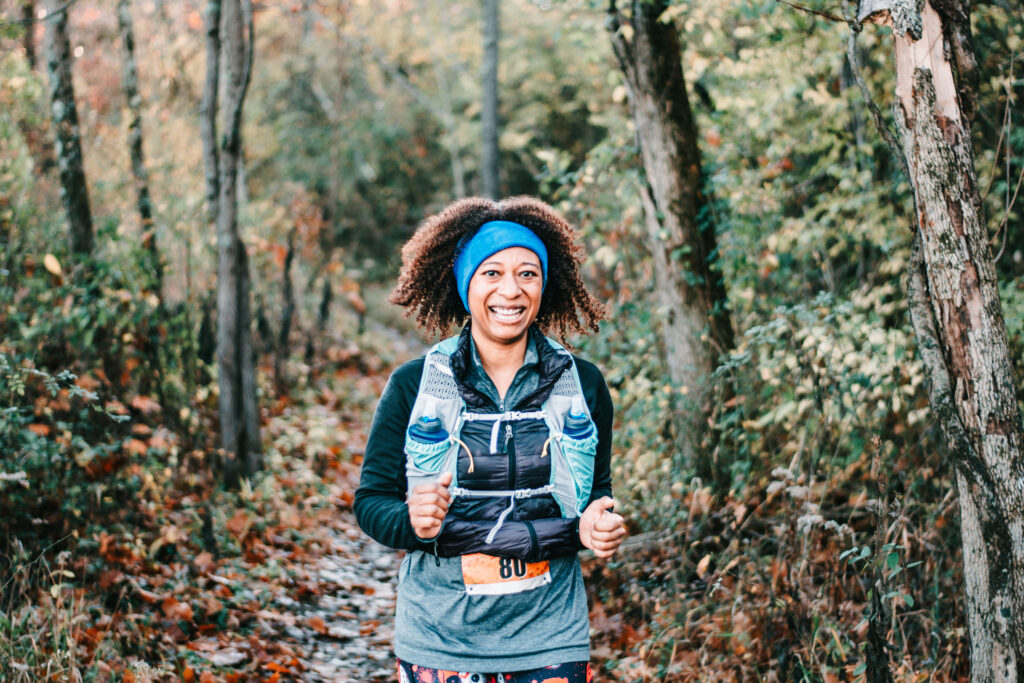Dec 21, 2022
Ultra Ready!
When I completed a marathon, I thought I had reached the pinnacle of running bucket-list achievements. What more can you do after 26.2, right?
A lot more, in fact.
If you hang around distance runners long enough, you might stumble into the world of ultrarunning. In ultrarunning, participants run much farther than the marathon distance – hence the name “ultra.” If you start running regularly on trails, you’ll meet many people who’ll happily talk about their next race, which is often a 50K or 100K. (I jokingly asked if those zeros next to the K were typos!)
I knew that if a 5K was 3.1 miles, a 50K was a little over 31 miles. A 100K would be a bit over 62 miles. I figured that anyone running ultramarathons, or “ultras,” had to be amazing specimens of fitness competing on a level I’d never reach, and I decided to applaud them from afar.
Don’t get me wrong – ultrarunners certainly have a high level of fitness to endure running such lengths for such a long period of time. But I discovered some differences in ultrarunning that intrigued me and made me think I just might be able to do one someday soon.
–Most ultramarathons are done on trails. When you’re running in the woods, time can stand still. As you take in the beauty of nature and focus more on your surroundings versus speed, you’ll find yourself picking up miles without even noticing how much time has passed or how tired you are. It’s quite a different feeling from hitting the wall at Mile 20 during a road marathon, and before you know it, you’ve spent all day in the woods racking up more miles than you thought. And the mental health benefits of time in nature are amazing – I often feel so much better after miles on the trail versus miles on the road.
-Walking is expected. Because you’ll be on your feet so long, you’ll need to know when to conserve energy. When you see a steep hill ahead of you, you’ll walk, climb or do anything but run at the same speed you would on a flat surface, like you would during your typical 5K, 10K, half-marathon or marathon races. Unless you are a competitive ultrarunner going for a PR, your goal is to finish, and you usually have a generous amount of time to get your race done.
–The breaks are amazing! While you don’t want to hang out at the aid station for too long, it’s quite normal to take more than a few seconds to rest and refuel so you can keep going. And the refueling is often fantastic. Homemade soups, grilled meat and all sorts of filling and tasty snacks are there to give you plenty of calories to replace the ones you’ve lost or will be losing during your race. Be careful though – you don’t want to chow down on a pulled pork sandwich and get a stomachache when you still have 15K to go in your 50K race. Save the good stuff for your victory meal and keep moving.
I haven’t done an ultramarathon yet, but it’s on my bucket list now. I want to take some time and get more accustomed to running longer distances on the trails and make sure I develop the strength to go up and down hills.
Still, I’m proud of taking the first step. Last month I ran a 25K (a little over 15 miles) all on a trail. I survived and had a great time! Ultramarathon, I’m halfway there!

By Shannon Shelton Miller /Twitter: ShannonSMWrites, Instagram: shannon.shelton1
Shannon Shelton Miller is a longtime writer and journalist who enjoys writing about sports, fitness, health, beauty, and parenting. She has been running for 27 years, starting from joining her high school cross country team. She has run a marathon, two half marathons, and countless 5K and 10K races.

